#panamatours
Text
Panama
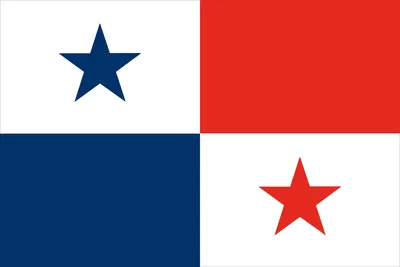
Panama is a country located in Central America, bordered by Costa Rica to the northwest and Colombia to the southeast. It is known as the land bridge between North and South America, and its location provides breathtaking scenery, diverse ecosystems, and rich biodiversity.
The country boasts a population of over four million people, with Spanish being the official language. The country's capital and largest city is Panama City, a cosmopolitan metropolis with impressive skyscrapers, cultural sights, and a bustling nightlife.
Panama has a rich history, with the indigenous peoples of Panama living on the land for centuries before Spanish colonization. In the centuries that followed, Panama was under various colonial rules until it gained independence in 1903. Today, Panama is a democratic republic with a rapidly growing economy anchored in the service sector and banking industries.
Traveling to Panama is easy, with direct flights available from major cities in North and South America. The country is a renowned tourist destination, with attractions ranging from tropical rainforests and natural reserves to white sand beaches and cultural landmarks.
This article is a comprehensive guide to Panama, providing you with information about its history, culture, politics, economy, ecology, geography, tourism, and more. So sit back, relax, and get ready to explore Panama through the eyes of this article.

Etymology
The name "Panama" has its origin in a word from an indigenous language, presumably from the Kuna language. The meaning of the word is not precisely known, but it's said to mean "abundance of fish" or "place with many butterflies and other colorful creatures." Another theory is that the word means "place of many trees" in an extinct indigenous language called Choco.
Another possible origin of the name Panama is from the Spanish language. The word "panama" means hat made of straw, and it was widely produced and worn in the country during colonial times. Some historians believe that the Spanish used the word to describe the country as a place of hat production and eventually adopted it as the name of the nation.
The earliest documentation of the name Panama dates back to the 16th century, when the Spanish explorer Vasco Núñez de Balboa named a town on the Pacific Coast, "Panama." The town eventually became a strategic, thriving city, known as Panama City, and it played a crucial role in the transcontinental trade routes of that era.
History
Panama has a rich history that dates back to pre-Columbian times. The indigenous people that inhabited Panama were the Cueva and Coclé tribes. In the 16th century, Panama was colonized by the Spanish, who used it as a trading hub for goods being transported between Spain and Peru.
During the colonial period, Panama grew prosperous due to its strategic location on the isthmus between North and South America. The construction of the Panama Canal began in the late 1800s, making the country even more important as a trading center.
Panama gained independence from Spain in 1821 and became a part of Colombia. However, tensions grew between Panama and Colombia, and in 1903, Panama declared independence. The United States supported Panama and helped negotiate a treaty with Colombia, which gave the United States control of the Panama Canal.
The 20th century was marked by political instability and military coups. General Omar Torrijos led a military coup in 1968 and ruled the country until his death in 1981. During his tenure, he implemented reforms and social programs that improved the lives of many Panamanians.
In 1989, the United States invaded Panama to remove General Manuel Noriega from power. The invasion resulted in the deaths of many civilians and soldiers, and Noriega was eventually captured and imprisoned in the United States.
Since then, Panama has made significant progress in political stability and economic development. In 1999, the country gained full control of the Panama Canal, which has been a major contributor to the country's economic growth. Today, Panama is a thriving country with a rich history and a promising future.
Pre-Columbian
The pre-Columbian era in Panama dates back to around 11,000 BC. During this time, the region was inhabited by various indigenous tribes. The largest of these were the Kuna, Embera, and Wounaan tribes.
These indigenous tribes were skilled farmers who relied heavily on agriculture to sustain their communities. They grew crops such as maize, yucca, and beans. They also hunted and fished, with fishing being particularly important given the many water bodies in Panama.
The indigenous tribes of Panama were also skilled artisans, with many producing intricate textiles and ceramics. They also had a rich spiritual and cultural tradition, which saw them creating art, sculptures and architecture that reflected their beliefs and values.
Signs of their civilization still exist today, with petroglyphs and remnants of their dwellings scattered across Panama. Despite facing challenges from colonization and other external factors, many indigenous communities still survive in Panama today, with government support for their culture and way of life.
Spanish Colonial Era
During the Spanish colonial era, Panama played an important role as a center of trade and transit. Spanish ships sailed from Panama to transport gold and silver from the Inca and Aztec empires back to Europe. The route was known as the "Camino Real" or "Royal Road," which connected Panama City to Portobelo on the Caribbean coast.
Panama was founded in 1519 by the Spanish conquistador, Pedro Arias de Avila. The city of Panama quickly became an important center for commerce and the gateway to South America. The discovery of gold in Peru and silver in Bolivia brought even more wealth to Panama, and the city became a hub for transporting treasure back to Spain.
In 1671, the Welsh pirate Henry Morgan led an attack on Panama City, burning it to the ground. The city was rebuilt in a new location a few miles away, and the ruins of the old city are now a popular tourist attraction. Despite the attack, Panama continued to thrive under Spanish rule.
The Spanish brought their language, customs, and architecture to Panama, which can still be seen today in the country's churches, plazas, and mansions. The country also experienced a mixing of cultures, with Spanish colonizers intermarrying with the indigenous population, creating a mestizo culture.
Slavery was practiced in Panama during the colonial era, with Africans brought over to work as laborers on plantations and in mines. The Afro-Panamanian population is a testament to the legacy of slavery, and their culture is an important part of Panama's cultural heritage.
In 1821, Panama gained independence from Spain as part of the newly formed Gran Colombia. However, Panama's ties to Colombia were short-lived, and the country declared independence from Colombia in 1903 with the help of the United States.
The Spanish colonial era left a lasting imprint on Panama's culture and identity, shaping the country into the diverse and vibrant nation it is today.
Independence and Modern Era
Panama's struggle for independence from Spanish colonial rule began in November 1821 with a revolt in the city of Los Santos. While this initial attempt failed, it inspired other independence movements throughout the country.
In 1903, Panama declared independence from Colombia with the support of the United States, who were eager to build a canal through the country. The new government was heavily influenced by U.S. interests, leading to tension between the two countries.
Throughout the 20th century, Panama experienced several political upheavals, including military coups and dictatorships. In 1968, General Omar Torrijos seized power in a coup and established a socialist government. Torrijos implemented several social and economic reforms, including land redistribution and the nationalization of various industries.
However, Torrijos was killed in a plane crash in 1981, and his socialist policies were reversed by his successor, General Manuel Noriega. Noriega was later ousted by the U.S. in 1989, following years of tensions and accusations of drug trafficking.
Since then, Panama has transitioned to a democratic government, with a president and a multi-party system. The country has experienced a period of economic growth and has become a hub for international business and finance.
However, Panama still faces political challenges, including corruption and inequality. The country has also faced criticism for its role in facilitating tax evasion and money laundering.
Panama's struggle for independence and modern political developments have shaped the country's history and continue to influence its present.
Geology
Panama's geology is unique due to its location as a land bridge between North and South America. It consists of three main geographic regions - the Central Mountain Range, the Caribbean Lowlands, and the Pacific Coastal Lowlands. The Central Mountain Range runs from east to west, with the highest peak being Volcan Baru at 3,474 meters.
The Caribbean Lowlands are characterized by the Caribbean Sea and consist of alluvial soils, low hills, and plains. The region has a tropical rainforest climate and is known for its lush vegetation, including mangroves, palms, and rubber trees. The area is also home to a diverse array of fauna, including monkeys, sloths, and jaguars.
The Pacific Coastal Lowlands are narrower than the Caribbean Lowlands and consist of fertile soils that have been formed from volcanic ash and lava. The area is dotted with coves and inlets and is home to a number of islands. The Pacific coastline is known for its many beaches and surf spots, attracting tourists from around the world.
Panama also has a number of active and dormant volcanoes, including Volcan Baru, which erupted 500 years ago. The volcanic activity has contributed to the formation of the country's rich soil, which has fostered the growth of tropical crops such as bananas, coffee, and sugarcane.
The country is also home to a unique geological formation known as the Panama Canal, which has played a significant role in global trade. The canal was built across the Isthmus of Panama and connects the Atlantic and Pacific oceans. It was completed in 1914 and has been expanded twice since then, making it one of the most important waterways in the world.
Panama's geology is diverse and complex, shaped by its location as a land bridge between two continents and its volcanic activity. The country's geological features have contributed to its rich biological diversity, thriving agriculture industry, and strategic importance in global trade.
Geography
Panama is a country located in Central America, bordered by Costa Rica to the west and Colombia to the east. It is an isthmus, which means that it is a narrow strip of land that connects two larger landmasses. Panama's strategic location has made it an important hub for international trade and commerce.
The country spans over 75,000 square kilometers and is divided into several regions. The interior of Panama is mostly mountainous, with the Cordillera Central mountain range running through the center of the country. The highest point in Panama is Volcán Barú, which stands at 3,475 meters.
The country is also home to a number of rivers, including the Chagres River, which is essential to the Panama Canal. The Panama Canal is a crucial shipping route that connects the Pacific Ocean to the Caribbean Sea.
Aside from the Cordillera Central mountain range, Panama is also home to several other mountain ranges, including the Serranía de Tabasará to the west, and the Serranía del Darién to the east. Despite its mountainous terrain, Panama also has a number of plains, such as the Azuero Peninsula and the San Blas Plains.
In terms of climate, Panama has a tropical climate with two distinct seasons. The dry season runs from December to April, while the rainy season lasts from May to November. The temperature in Panama is fairly consistent throughout the year, with average temperatures ranging from 24°C to 29°C.
Panama's unique geography has made it an important location for international trade and commerce. Its mountainous terrain, rivers, and plains make it a diverse and interesting place to visit for those who love nature and the great outdoors.
Terrain
Panama's terrain is incredibly diverse, with the country occupying the southernmost part of Central America. The country's landscape is made up of mountains, plains, valleys, and beaches, all of which provide visitors with a variety of activities to enjoy.
One of the most prominent features of Panama's terrain is its mountain ranges. The Cordillera Central runs through the country from east to west, separating the Caribbean and Pacific coasts. The highest point in Panama is the Volcan Baru, located in the western province of Chiriqui. Standing at 3,475 meters tall, it offers breathtaking views of both oceans.
The country also has several plains and plateaus, particularly in the eastern part of the country. The Azuero Peninsula is a flat, dry region that extends into the Pacific Ocean. The region is known for its cattle ranches and farms, and its narrow roads lead to coastal towns and beaches.
The Chiriqui province, on the other hand, is a fertile valley that is home to some of the country's most productive plantations and farms. The province is famous for its coffee plantations, which produce some of the best coffee beans in the world.
Panama also has an extensive coastline, with beaches and coves on both the Caribbean and Pacific coasts. The Caribbean coast is known for its clear blue waters and white sandy beaches. Bocas del Toro, in particular, is a popular tourist destination that offers visitors a chance to relax, surf, and scuba dive.
The Pacific coast, on the other hand, is characterized by rocky cliffs and dark sands, but it's just as beautiful as its Caribbean counterpart. The Pearl Islands are a group of islands located off the coast of Panama, and they offer some of the country's most stunning beaches.
Panama's terrain is incredibly diverse, from its jagged mountain peaks to sprawling plains and lovely beaches. The country's varied landscapes offer plenty of activities for visitors to enjoy, from hiking and trekking to surfing, fishing, and beach lounging.
Water Bodies
Panama is blessed with a number of amazing water bodies, including rivers, lakes and oceans. The country is located between the Pacific Ocean to the south and the Caribbean Sea to the north, and is home to numerous rivers and several lakes.
The Panama Canal runs between the Pacific and Caribbean and serves as an important water body for transportation, allowing ships to travel between the two oceans. The canal has also served as a significant source of revenue for the country.
In addition to the canal, there are numerous other important rivers in Panama, including the Chagres River, which runs through the Soberania National Park, and the Santa Maria River, which serves as a natural border between Panama and Costa Rica. The Chiriqui Viejo River also serves as an important source of hydroelectricity for the country.
Lake Gatun, located in the middle of the Panama Canal, was created as a result of the canal's construction and is one of the largest man-made lakes in the world. The lake provides a habitat for numerous species of wildlife, including monkeys, crocodiles and various bird species.
Panama's coastline also offers numerous opportunities for water-based activities, including swimming, surfing, and fishing. Some of the popular beaches include Santa Catalina, Bocas del Toro and San Blas Islands.
The country's oceans are home to diverse marine species, including fish, sea turtles, and sharks. The Coiba National Park, located off the coast of Panama, is one of the largest marine parks in the world and is home to a variety of marine life.
Panama's numerous water bodies offer a host of opportunities for recreational activities as well as important resources for the country's economy. Be sure to check out some of these amazing water bodies when visiting Panama.
Ecology
Panama is home to a diverse range of ecological features due to its unique location and diverse topography. From dense rainforests and mangroves to coral reefs and high-altitude grasslands, there is no shortage of natural wonders in Panama.
One of Panama's most notable ecological features is the Panama Canal and the surrounding rainforests, which are home to an amazing array of wildlife, such as jaguars, sloths, and capuchin monkeys. Visitors can experience the lush natural environment by taking a guided boat tour through the Canal or hiking through the Soberania National Park.
Another important ecological feature in Panama is the Mesoamerican Barrier Reef, the second-largest coral reef system in the world. This 1,000 kilometer-long reef is home to hundreds of species of fish, sea turtles, and other marine life. Visitors can scuba dive and snorkel in crystal-clear water to see colorful coral formations and exotic fish.
Panama's high-altitude grasslands are another ecological feature that is unique to the country. The Mount Totumas Cloud Forest Reserve, located in the Chiriqui Province, is a prime example of this landscape. Home to a variety of species, such as quetzals, toucans, and howler monkeys, visitors can explore the area by hiking through the cloud forests or taking a bird-watching tour.
Panama's mangrove swamps are an important ecological feature that supports diverse marine life and provide a buffer against natural disasters such as hurricanes and floods. There are many mangrove swamps throughout the country, including the Gulf of Montijo and Gulf of Panama.
Panama is also home to many other vital ecological features, such as rivers, lakes, wetlands, and national parks. Exploring these areas is an excellent way to connect with nature and learn more about the country's rich ecological diversity.
Panama's diverse ecological features demonstrate the importance of preserving and protecting the natural environment. By taking steps to conserve and respect the country's natural resources, visitors can help ensure that future generations can continue to experience the beauty and wonder of Panama's unique ecological features.
Biodiversity
The biodiversity of Panama is incredibly rich and diverse, with many unique species found nowhere else on earth. The country's strategic location at the isthmus of America makes it a significant land bridge between North and South America, allowing for a mixing of flora and fauna from both regions.
Panama is home to over 10,000 plant species, with many rainforest areas known for their incredible variety and density. Some notable plants found in Panama include orchids, bromeliads, and ferns.
The animal kingdom in Panama is equally diverse, with over 1,000 bird species being recorded, making it one of the best birdwatching destinations in the world. Among the most famous bird species found in Panama are the harpy eagle, the resplendent quetzal, and the blue-crowned motmot.
Read the full article
0 notes
Photo
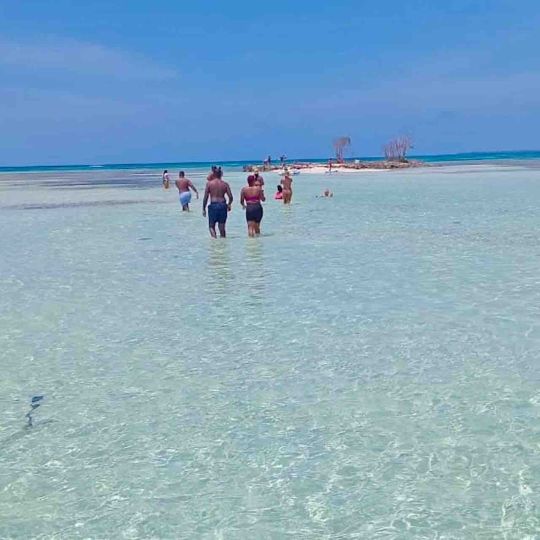
Spend a day like no other with us in the tropical San Blas islands. Our tour visits 3 islands, including Isla Perro, Arena Blanca, Isla Diablo and the famous Natural Pool, where you can stand waist deep in the middle of the ocean amidst sea stars. #sanblas #sanblasislands #sanblaspanama #panama #panamatravel #panamatours #tropical #islandtravel #beachvibes #offthegrid #beachlover (at San Blas Islands Panama) https://www.instagram.com/p/CrasVw7yDOd/?igshid=NGJjMDIxMWI=
#sanblas#sanblasislands#sanblaspanama#panama#panamatravel#panamatours#tropical#islandtravel#beachvibes#offthegrid#beachlover
0 notes
Photo
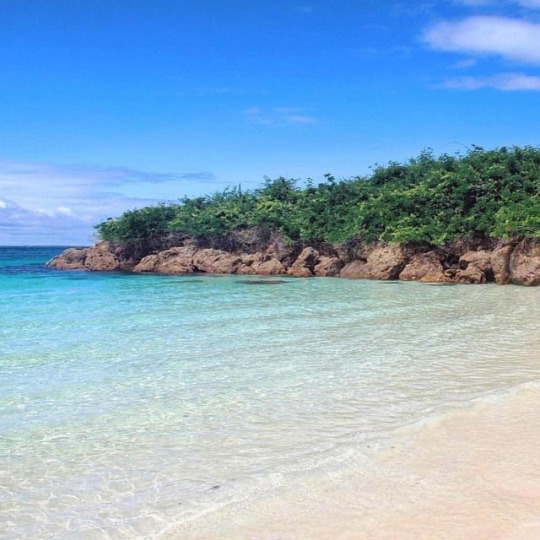
#AzueroSoyYo 👉🏻📸@destinospty507 - Isla iguana un lugar increíble... ven y conoce 🇵🇦 Panamá🤙🏼 #islaiguana #visitpanama #cocle #panamazing #panamacity #travel #cocle #panamacity #visitpanama #panamazing #cocle #villatavida #destinospty507 #aventuras #penonome #panamatours #potd #aventuras #tourspanama #pty #turismopty #turismoenpanama #chiriqui #bocasdeltoro #destinospty507 #sanblas (en Isla Iguana) https://www.instagram.com/p/B1ytrXJn47A/?igshid=xu5xx0cf3r8f
#azuerosoyyo#islaiguana#visitpanama#cocle#panamazing#panamacity#travel#villatavida#destinospty507#aventuras#penonome#panamatours#potd#tourspanama#pty#turismopty#turismoenpanama#chiriqui#bocasdeltoro#sanblas
1 note
·
View note
Photo

🏝️Isla Gagandup. Camping & Restaurante 🏕️🍽️📱6392-0784. #panamáturismoverde2026 #excelenciasgourmet2018 #turismopanamá #visitapanama #panamáturismo #panamatour #panama #vacaciones #trippanamá #travel #sanblasbeachgagandup #playa #verano #trippanamá #camping⛺️ #panamatours https://www.instagram.com/rgonzalez.ayarza/p/Bt5osG5AzYk/?utm_source=ig_tumblr_share&igshid=gd1sqegitfif
#panamáturismoverde2026#excelenciasgourmet2018#turismopanamá#visitapanama#panamáturismo#panamatour#panama#vacaciones#trippanamá#travel#sanblasbeachgagandup#playa#verano#camping⛺️#panamatours
1 note
·
View note
Photo
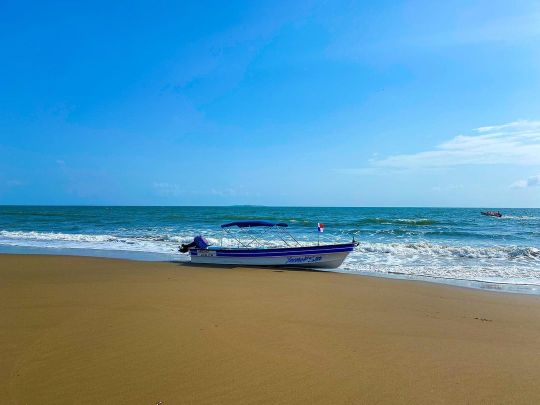
Amazing day at Isla [email protected]. Thanks for making this happen. All around best service...... . . . . . . . . #islaiguana #pedasi #panamatours #panamaexperience #pty #panamá #thepanamalife #panamaadventure #panamatravel #turismointerno #thebest #beachlife #beachbum #pacificocean #clearwater #turquoisewater #bestbeaches #youcantbeatthis @ict.experiencias @keishmertv (at Pedasí, Los Santos, Panama) https://www.instagram.com/p/COElYIahPwL/?igshid=eaax8s0hijef
#islaiguana#pedasi#panamatours#panamaexperience#pty#panamá#thepanamalife#panamaadventure#panamatravel#turismointerno#thebest#beachlife#beachbum#pacificocean#clearwater#turquoisewater#bestbeaches#youcantbeatthis
0 notes
Photo
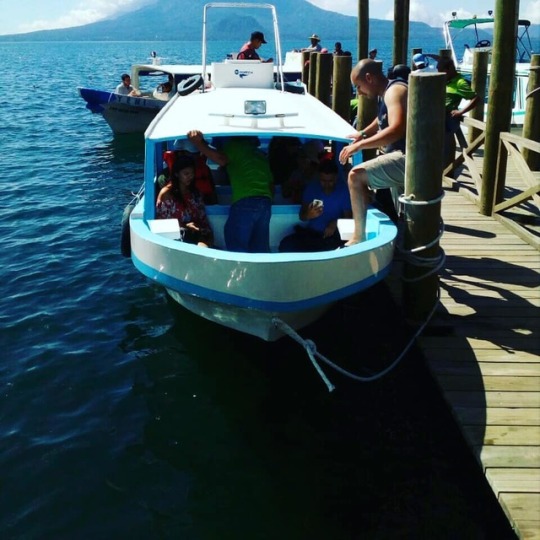
Turistas en él lago de ATITLAN #mexicanasviajeras#mexico#chiletours#chile#argentinatours#panamatours#panama#costarica🇨🇷 #turismomiami #turismo #turista #turismospain #todeferias #1 #feriainternacionaldeturismo (en Lago De Atitlan, Panajachel, Sololá) https://www.instagram.com/p/BstxcCaB7-x/?igshid=8gh9nhq8jtkc
#mexicanasviajeras#mexico#chiletours#chile#argentinatours#panamatours#panama#costarica🇨🇷#turismomiami#turismo#turista#turismospain#todeferias#1#feriainternacionaldeturismo
0 notes
Photo

#canonpanama #canonpanamá #canont6 #canon_photos #canon #chamepanama #chame #panamatours #panamaturismo #panamatrips #panamatrip #panamatoday #panamatour #panama #yousocanon #paseopanama #teampaseopanamá #iampanama #ilovepanama #visitpanama #pty #thingstodoinpanama #recorriendopanama https://www.instagram.com/p/Bw-qpxXnrxt/?utm_source=ig_tumblr_share&igshid=1kr7wza6uiahn
#canonpanama#canonpanamá#canont6#canon_photos#canon#chamepanama#chame#panamatours#panamaturismo#panamatrips#panamatrip#panamatoday#panamatour#panama#yousocanon#paseopanama#teampaseopanamá#iampanama#ilovepanama#visitpanama#pty#thingstodoinpanama#recorriendopanama
0 notes
Text
Panamatourism - Familytours - Tonyspanamatours
Tony’s Panama Tours is a Family Enterprise that thinks about how to Rocha - tourism-panamaoffer an alternative and something different for all those who for pleasure or business visits our Country Panama

For More Information Visit : http://tonyspanamatours.com/ (or) Call : + 507 6090-1161
#panamatourism#panamatours#panama#panamavacations#vacationsinpanama#familytour#tours#trip#travel#traveltopanama#panamatravel
0 notes
Photo

This rare picture of me somehow became my most popular post on Twitter (and I've wasted time on there since 2008). Yeah, just a tourist staring at the wall from an oddly placed bench at Iglesia de Santo Domingo in the Casco Viejo neighborhood of Panama City. Read more at https://www.boozefoodtravel.com/ruined-in-panama #travel #travelmemories #travelislife #travelmore #panamatravel #iamatraveler #instatravel #tripstagram #Panama #巴拿馬 #旅遊日記 #旅遊 #awkwardselfie #panamacity #cascoviejo #panamazing #panamacitypanama #panamatourism #visitpanama #travelselfie #travelstory #lonelyplanet #travelingram @visitpanama (at Casco Viejo Panamá City) https://www.instagram.com/boozefoodtravel/p/CYpotHTAxpG/?utm_medium=tumblr
#travel#travelmemories#travelislife#travelmore#panamatravel#iamatraveler#instatravel#tripstagram#panama#巴拿馬#旅遊日記#旅遊#awkwardselfie#panamacity#cascoviejo#panamazing#panamacitypanama#panamatourism#visitpanama#travelselfie#travelstory#lonelyplanet#travelingram
0 notes
Photo

La provincia Bocas del Toro en Panamá es conocida por su arquitectura. Sus peculiares casas de madera sobre pilotes que parecen ranchitos son muy atractivas para los visitantes de las islas. The Bocas del Toro province in Panama is known for its architecture. Its peculiar wooden houses on stilts that look like little ranches are very attractive for visitors to the islands. #panamatour #caribbeanparadise🌴🌴🌴 #centralamericatrip #mayangateway #travelagent #viajaresvivir #viajamañana (en Bocas del Toro Province) https://www.instagram.com/p/CCcPGAzlxUS/?igshid=1x4ydw2nbhpo9
#panamatour#caribbeanparadise🌴🌴🌴#centralamericatrip#mayangateway#travelagent#viajaresvivir#viajamañana
0 notes
Photo

Llegó el Verano y el cuerpo pide Playa, Arena y Sol. Disfruta de un día en las aguas del caribe panameño. Ingresa al link de nuestra Biografía y reserva... 🌴 ¡Venas azules & Playas blancas esperan por ti!🌴 . INCLUYE: ☀️Transporte terrestre desde Albrook (ida y vuelta) ☀️ Lancha con salvavidas. ☀️ Guía local ☀️ Entrada al sitio. ☀️ Visita a Playa Blanca y venas azules ☀️ ALMUERZO +BEBIDA ☀️ Uso del equipo de snorkel ☀️ Uso de las sillas de Playa ☀️ Hidratación ☀️ Botiquín de primeros auxilios ☀️ Guardavidas. Salidas todos los sábado y domingo. 💰Reserva y paga con seguridad en nuestra web www.pahoy.world 💳 Paga con Tarjeta de Crédito. 🛡️ Guía Certificado. 🔒 Garantía de devolución. #conocepanama #tripjoelsanz #enamoratedepanama #panamagram #visitpanamá #verano2020 #panama507 #Panamá500 #apagayvámonos #sivisitasnoensucies #caribbean #paradise #beach #panamatourism #panamalife #bestvacations #goodvibes #summerpanama (en Panama City, Panama) https://www.instagram.com/p/B62x2iNgtFg/?igshid=ok1k4fprpk9o
#conocepanama#tripjoelsanz#enamoratedepanama#panamagram#visitpanamá#verano2020#panama507#panamá500#apagayvámonos#sivisitasnoensucies#caribbean#paradise#beach#panamatourism#panamalife#bestvacations#goodvibes#summerpanama
0 notes
Photo

Need to get away from it all? We know the right places 😁 #sanblaspanama #islandgetaway #getawayfromitall #islandvacation #taotravel365 #panamatours https://www.instagram.com/p/Ccn7uBzOZ3v/?igshid=NGJjMDIxMWI=
0 notes
Photo

👉🏻📸@abdiel19pa - 🎮🚁 . . 🥥Beach Vibes🍹 . . . . . #azuero #azuerosoyyo #lomejordeazuero #landscape #landscapephotography #photo #photography #panama #travel #travelblogger #travelphotography #panamatourism #panamatravel #panamá ##wonderlust #traveler #traveladdict #traveling #dji #phantom #visitpanama #beach #trip #beaches (en Playa El Rompio) https://www.instagram.com/p/BtifEhPHbW4/?utm_source=ig_tumblr_share&igshid=ihzw9w8yx1hv
#azuero#azuerosoyyo#lomejordeazuero#landscape#landscapephotography#photo#photography#panama#travel#travelblogger#travelphotography#panamatourism#panamatravel#panamá#wonderlust#traveler#traveladdict#traveling#dji#phantom#visitpanama#beach#trip#beaches
0 notes
Photo
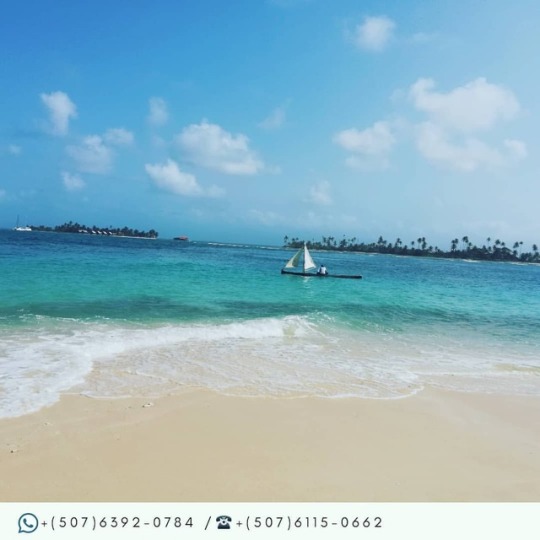
Isla Gagandup 🏝️ Restaurante & Camping 🍽️⛺ #panamáturismoverde2026 #excelenciasgourmet2018 #turismopanamá #visitapanama #panamáturismo #panamatour #panama #vacaciones #trippanamá #travel #sanblasbeachgagandup #playa #verano #trippanamá #camping #travelphotography #travelblogger #amazingthings #adventure #summer #surfpanama #summerPaz #laight #NOMADGOODS #nockexcelente #camping⛺️#fotografía #foodie https://www.instagram.com/rgonzalez.ayarza/p/BvJCY0nl56V/?utm_source=ig_tumblr_share&igshid=5gzr255wmu1k
#panamáturismoverde2026#excelenciasgourmet2018#turismopanamá#visitapanama#panamáturismo#panamatour#panama#vacaciones#trippanamá#travel#sanblasbeachgagandup#playa#verano#camping#travelphotography#travelblogger#amazingthings#adventure#summer#surfpanama#summerpaz#laight#nomadgoods#nockexcelente#camping⛺️#fotografía#foodie
0 notes
Photo
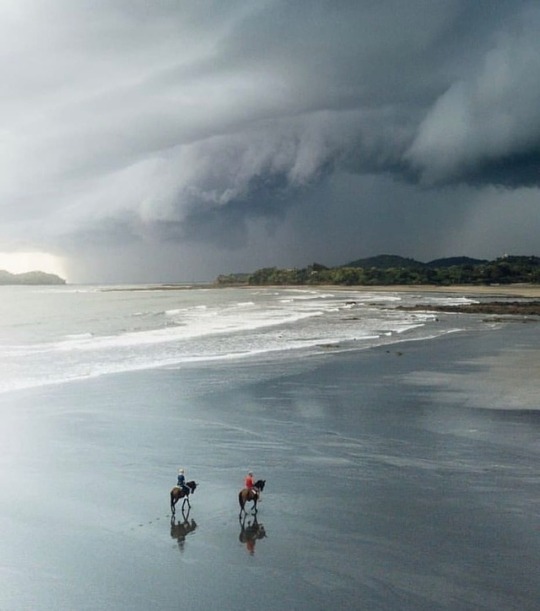
#VeraguasSoyYo • 📍Playa Santa Catalina, Veraguas . • 📸: @fonseca_digitalmarketing • 👉#PANAMATOUR #VisitPanama (en Santa Catalina, Veraguas, Panama) https://www.instagram.com/p/BsL3Vn4Bl8A/?utm_source=ig_tumblr_share&igshid=13ny1f8krik0o
0 notes
Photo

#canonpanama #canonpanamá #canont6 #canon_photos #canon #chamepanama #chame #panamatours #panamaturismo #panamatrips #panamatrip #panamatoday #panamatour #panama #yousocanon #paseopanama #teampaseopanamá #iampanama #ilovepanama #visitpanama #pty #thingstodoinpanama #recorriendopanama https://www.instagram.com/p/Bw-pVd0nFRi/?utm_source=ig_tumblr_share&igshid=kttbcmw3kolc
#canonpanama#canonpanamá#canont6#canon_photos#canon#chamepanama#chame#panamatours#panamaturismo#panamatrips#panamatrip#panamatoday#panamatour#panama#yousocanon#paseopanama#teampaseopanamá#iampanama#ilovepanama#visitpanama#pty#thingstodoinpanama#recorriendopanama
0 notes